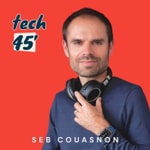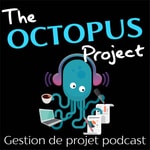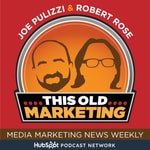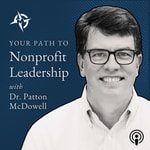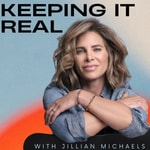Education Marketing Leader with Chris Rapozo – Détails, épisodes et analyse
Détails du podcast
Informations techniques et générales issues du flux RSS du podcast.
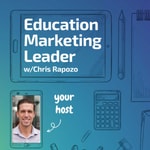
Education Marketing Leader with Chris Rapozo
Chris Rapozo
Fréquence : 1 épisode/8j. Total Éps: 118

🎙️ Welcome to The Education Marketing Leader Podcast Hosted by Chris Rapozo, this podcast delivers actionable insights and proven strategies specifically for higher ed marketers.
Each episode explores the challenges and opportunities in education marketing, providing you with tools to refine your campaigns, elevate your institution’s brand, and engage your audiences effectively.
Learn how to create impactful content strategies, leverage personalization, optimize social media, and tackle challenges unique to higher education marketing.
This podcast is designed to help you stay competitive and drive measurable results.
👉 Subscribe now to gain practical strategies and fresh ideas tailored to higher ed marketing.
Have insights to share?
👉 Contact us to be a guest.
Get the insights you need to grow your impact as a higher ed marketer!
Classements récents
Dernières positions dans les classements Apple Podcasts et Spotify.
Apple Podcasts
🇨🇦 Canada - marketing
22/07/2025#64
Spotify
Aucun classement récent disponible
Liens partagés entre épisodes et podcasts
Liens présents dans les descriptions d'épisodes et autres podcasts les utilisant également.
See all- https://www.linkedin.com/feed/#
1654 partages
- https://www.linkedin.com/feed/
1291 partages
- https://www.linkedin.com/in/jaimehunt/
196 partages
- https://jamesclear.com/atomic-habits
572 partages
- https://www.higheredmarketerpodcast.com/
135 partages
- https://www.youtube.com/c/thattallfamily
2 partages
- https://www.youtube.com/@JonBrollin
2 partages
Qualité et score du flux RSS
Évaluation technique de la qualité et de la structure du flux RSS.
See allScore global : 78%
Historique des publications
Répartition mensuelle des publications d'épisodes au fil des années.
What Stronger Faculty Visibility Can Unlock for Your Institution - A Conversation with Dr. Hashim Zaman
Saison 3 · Épisode 20
jeudi 17 juillet 2025 • Durée 32:11
Most faculty pages are outdated directories. No story. No strategy.
But in today’s landscape, faculty visibility impacts everything, from citations and media to enrollment and funding.
In this episode, Dr. Hashim Zaman breaks down how higher-ed marketers can support faculty online without adding to their workload, or risking trust.
Here’s what you’ll take away:
- Why personal branding feels performative to most academics and how to reframe it as “visibility with purpose” rooted in research—not hype.
- The disconnect between MarCom teams and faculty. One wants content. The other wants control. Here’s how to bridge the gap.
- What makes academic content more shareable and engaging. From video abstracts to short posts, Dr. Zaman shares formats that work.
- How marketing leaders can support faculty without overwhelming them. Tools, templates, opt-ins, and mindset shifts that build long-term trust.
“Most professors want their work to be seen, they just don’t want to lose control of how it’s represented.” Dr. Hashim Zaman
🔗 Check out academic.blog to learn more
🎧 Follow Education Marketing Leader for more conversations like this.
Building Better Web Content for Neurodiverse Students - A Conversation with Beth Noël
Saison 3 · Épisode 19
jeudi 3 juillet 2025 • Durée 34:29
Your website might be compliant. But is it neuroaccessible? If it’s not, you’re losing students before they even apply.
In this episode of the Education Marketing Leader podcast, I talk with Beth Jendro Noël, Director of Communications and Creative Services at Middlesex Community College.
She breaks down what most higher ed marketers are missing when it comes to accessibility, and how to fix it.
We cover:
✅ What “neuroaccessible” really means
✅ A practical audit you can use right now
✅ Why 33% of students are affected—but only 8% disclose
✅ How inclusive design helps retention, not just recruitment
✅ How her team built a better website using next steps, plain language, and video
Beth also shares a powerful personal story about supporting her neurodivergent child through the college application process and realizing her own institution’s site wasn’t built for them either.
Bonus: Don’t miss Beth’s article: The Power of Neuro-Accessible Communications: https://www.linkedin.com/pulse/power-neuro-accessible-communications-beth-jendro-no%25C3%25ABl-lunoe/?trackingId=uzagXRbqSs%2BjbjSVjBJaEA%3D%3D
🎧 Listen now.
➡️ Follow Beth for more accessibility insights.
📲 Subscribe to Education Marketing Leader for more no-fluff episodes built for higher ed marketers who actually want to move the needle.
How to Market to Non-Traditional Students the Right Way — A Conversation with Yane Nemeroff
Saison 3 · Épisode 10
jeudi 10 avril 2025 • Durée 34:34
In this episode of the Education Marketing Leader podcast, I sat down with Yane Nemeroff, Assistant Professor of Communication Studies at Miami Dade College and host of the Non-Traditional Scholar Podcast to talk about how to market to non-traditional students without the fluff.
Yane joined me to break down what higher ed marketers need to know about this growing audience.
⚡ Key takeaways:
- “Non-traditional” doesn’t mean just parents or veterans. It’s anyone who didn’t go straight from high school to college.
- Relevance is everything. Don’t sell the experience — show the outcome.
- Collaborate with faculty. Their insight can refine your message.
- Real stories convert. Highlight students like Gloria, who went from running a pizza shop to earning her degree and becoming a teacher.
- Offer options, not ultimatums — trades and 4-year degrees aren’t enemies.
- Platforms matter: Spotify for younger students, Facebook for older ones.
- Be honest. Don’t lead with a benefit they may not qualify for. It backfires.
This one’s packed with insights for anyone targeting adult learners, career changers, or returning students.
To close the episode, Yane said something that stuck with me:
“We can’t dangle the carrot and lock it in a cage. Be honest. Be human. These students have been through enough.”
📲 Listen to the full convo today.
Follow the Education Marketing Leader podcast and subscribe to catch every new episode.
Until next time. ✌️
How to build an audience - An interview with Dan Sanchez
Saison 1 · Épisode 20
lundi 3 juillet 2023 • Durée 30:50
My latest guest on the Marketing Tales show is a former higher-ed marketer turned B2B SaaS evangelist serving higher-ed clients on all things engagement, enrollment, marketing, and student success.But that's not all, folks.He's also the host of the Attention Podcast and Audience Growth teacher at Danchez, Element451's Director of Inbound Marketing, and author of the children's book "I Want To Be A Marketer When I Grow Up."Meet my friend #Danchez, a.k.a Dan Sanchez.Dan's love for graphic design led him to become a marketing leader early in his career.He was well established as a marketer when he felt the "itch" to return to school and earn his undergraduate degree in Marketing Management, followed by an MBA with an emphasis in IT Management.He specializes in audience growth and grew his LinkedIn following from 1,000 to 10,000 followers in just five months.The secret sauce to building an audience is to "build real relationships with people and make lots of friends," Dan says, which in his opinion, is the best way to build an audience in the beginning."It's kind of like making friends," he says. "You have to go one by one, be helpful to lots of people and help them succeed."When it comes to setting up a successful SaaS social media strategy, Dan likes to refer back to his days at Sweet Fish when the company developed an "Evangelist program," where the firm's leadership encouraged its subject matter experts to be consistent on LinkedIn because, in general, people engage more with personal brands than companies.It's easier to build a one-to-one relationship with a person than a brand, "which in B2B land makes all the difference to building trust with your ideal buyers," he says.Yet, nothing worthwhile is going to be given to you.Building an audience takes a lot of hard work!When Dan grew his following from 1,000 to 10,000 people in five months, he posted two to three times a day for five months, spending four to five hours on LinkedIn:Every.Single.Day.Engaging with everybody!"If you showed up to a new city and somehow discovered where all the social gatherings were, worked the rooms, shook hands, laughed, and listened to people, you'd make a lot of friends, and it won't be long until the whole city knew your name," Dan says.It's the same thing on LinkedIn, except that you show up in people's comments, engaging with the people there.That kind of grit and determination can work for anybody.You just have to decide to go all in.For more nuggets on making new friends on social, listen to the whole episode by clicking the link in the comments below.To learn more about audience growth directly from Dan, follow him on LinkedIn or visit his website, danchez.com, to discover links to his social media channels, podcasts, and blog.And if you have little ones, get a copy of "I Want To Be A Marketer When I Grow Up."I did, and my kids love it.Until next time. ✌️
How to B2B Market to the Chinese Market - An interview with Christian Klepp
Saison 1 · Épisode 19
lundi 3 juillet 2023 • Durée 34:22
My latest guest on the Marketing Tales show is a well-traveled and incredibly cultured international man of mystery who entered this world in the shadows of the Austria Alps, grew up in the Philippines, received his education in the city-state of Singapore, and developed his marketing acumen in Shanghai, China. Meet Christian Klepp, the co-founder and director of client engagement at EINBLICK Consulting Inc., a Toronto-based consulting firm, and host of the B2B Marketers on a Mission Podcast. Christian received his business/commerce degree from the Management Development Institute of Singapore (MDIS) before starting his marketing career over two decades ago. After an initial stint as a marketing executive at a firm in Germany, Christian moved back to the Far East and remained there for nearly 15 years, learning the language and cultural norms of the Chinese people before relocating to Toronto, Canada, where he started his agency. When I asked him "Why China" in our pre-show interview, he answered: "Why not?!" revealing a stereotypical ignorance within me I didn't know I had. We fear what we don't understand. 💡This show sometimes helps shine a light on those corners of the world that often remain hidden in our Western bubble. The first thing Christian learned about the cultural differences during his studies at MDIS is "being disciplined in everything that you do," he recalls. "In life, there will always be problems, but you have to learn to view the problems from different angles to come up with the right solutions."Talking about problems. In this age of economic globalization, businesses can offer products far beyond their borders, and the Chinese market, with its estimated $14.9 trillion GDP, could prove lucrative for many Western corporations. But there are several pitfalls companies could find themselves in if they fail to do their homework before entering markets abroad.Two common barriers Christian observed companies struggle with when entering the Chinese market: 1- The language barrierThe language has profound meaning with several layers of complexity a simple AI translator can't navigate. If companies try to translate their marketing copy with Google Translate, they'll quickly alienate themselves from their prospective target audiences. 2- The cultural barrierMany Asian societies, including China, are based on hierarchy and the "concept of face," not observed in the West. The "losing of face," the "saving of face," and the "keeping of face" are fascinating nuances explained in the video.Check. It. Out.To learn more about the different approaches marketers should know about when promoting products abroad, connect with Christian on LinkedIn or check out his agency, EINBLICK Consulting, to help you stand out in the market and drive revenue to your business.A special thanks to Robb Conlon for the intro to Christian. Until next time. ✌#marketing
How to Marketing A Non-Profit - A Interview with David May from the Los Angeles Regional Food Bank
Saison 1 · Épisode 18
lundi 3 juillet 2023 • Durée 32:52
In the latest episode of the Marketing Tales Show, I had the pleasure of speaking with David May, the Director of Marketing and Communications at the Los Angeles Regional Food Bank.David studied at Chapman University in Orange, Calif., and earned both his Bachelor's and Master's degrees in film.Upon graduation, he remained at his alma mater, worked in admissions for several years, then moved into #marketing, working his way into an Assistant Vice President of Web and Digital Media role at the university.After 17 years at Chapman, including his time as a student, David was ready to "finally graduate and go out into the big world and see what adventures there are out there," he recalls.Those adventures took him northwest on Interstate 5 and opened doors of opportunities at the Los Angeles Regional Food Bank, which has served 1.6 billion meals since its inception in 1973.As Director of Marketing and Communications, David works toward reaching the next billion meals served.This begs the question: how does one market a non-profit in 2023?1 - Knowing your audience 2 - Distributing messages through modern marketing and low-cost practices"We have a high emphasis on ROI," David says.Focusing on #publicrelations efforts is one way to keep the cost down and awareness up.During the pandemic, food banks were a big part of the national story. The LA food bank gained coverage by notable outlets such as AP, Reuters, MSNBC, and many more, receiving nearly half a billion dollars in earned media coverage."One thing we like to do to ensure the media continues to work with us is to drop everything, and we get them what they need," David says.When it comes to food donations, those primarily come from farmers, growers, wholesalers, and grocers in the LA County area.Donations of funds are also invaluable, and the food bank partners with major corporations and professional sports teams in LA."These are organizations that want to make a big difference in the community," David says. "They call us and ask 'what can we do, how can we help?'"As a thank you, the food bank amplifies that message and shares the goodwill these companies show with its 200,000 newsletter subscribers and additional social media followers.Talking about the newsletter, if you're interested in learning more about the Los Angeles Regional Food Bank and its story, visit its website and sign up or follow the food bank on social media.To get in touch with David, connect with him on LinkedIn or email him at dmay@lafoodbank.org to learn more about how you can positively impact the people of LA County.Thank you, David, for being a part of the show, and thank you Kat Liendgens, for making yet another intro to a marketing leader.Until next time. ✌
The Adaptable Marketing Leader - an interview with Holly Wright
Saison 1 · Épisode 17
lundi 3 juillet 2023 • Durée 24:32
- The Lean Marketplace by Cristóbal Gracia and Juho Makkonen
- Predictably Irrational by Dan Ariely
How to Get the Most B2B Marketing Qualified Leads (MQLs) - An Interview with Laurie Hood
Saison 1 · Épisode 16
lundi 3 juillet 2023 • Durée 34:53
My latest guest is an amazing marketing leader and the first CMO on my show!Laurie Hood, a proud Clemson University grad, studied economics and computer science before starting her marketing career.Laurie entered the tech marketing arena right out of college. She forged her way through the ranks at many well-known corporations and now holds the position of Chief Marketing Officer at Mobilewalla, a data and artificial intelligence company headquartered in Atlanta, Ga. As a B2B SaaS marketing executive, Laurie’s team uses various marketing channels to get the message about her product out, such as social, SEO, paid ads, webinars, and industry conferences.“We get tremendous success with paid social,” she says. But, “I’m very much about quality, not quantity, so when I send a lead to my seller, I want to be sure that the prospect knows who Mobilewalla is and that receiving a phone call from us is not going to seem weird.”Highlighting the importance of adequately moving a prospect down the sales funnel.
- Awareness
- Interest
- Desire
- Close
But the tried and true way to receive MQLs usually comes from in-person events, such as industry conferences, because of the value of face-to-face interactions. Back to her quality-over-quantity approach, Laurie’s team differentiates prospects by hot, warm, and cold leads during field marketing efforts after receiving a business card.“What I don’t want is to get 1,000 business cards, and 950 of them just wanted our giveaway,” Laurie explains. Hot leads go directly into Salesforce, then get assigned to sellers, and become SQLs. Warm and cold leads are added to a separate list and receive nurture campaigns, and as these warm and cold leads convert through nurture, they eventually become SQLs.An excellent way to bring awareness and generate demand, especially at conferences, is through thought leadership presentations, she explains. A few key things that help you succeed:
- Don’t make your presentation a sales pitch
- Identify qualified speakers
- Know your audience
About the third point, depending on the situation, certain industry audiences appreciate speakers who are practitioners, not managers. Laurie is known to have asked junior-level employees to speak at events to build a bridge and relatability between her audience and the organization a senior-level executive may not be able to achieve. “Everyone has something to contribute,” Laurie says. “You just have to get your people on the right topic with the right group.”A great lesson in leadership! Talking about lessons, one of the most important lessons Laurie learned during her successful marketing career is to be empathetic with non-marketers and back up efforts with data to help them understand why she implements specific strategies and tactics. To get in touch with Laurie to talk marketing or learn more about Mobilewalla, connect with her on LinkedIn or email her at Laurie@mobilewalla.comUntil next time.
How to Make a Higher-Ed Website More Enrollment Focused - an episode with Bart Caylor
Saison 1 · Épisode 15
lundi 3 juillet 2023 • Durée 26:55
My latest guest first appeared in my car’s speakers as I headed southbound on Georgia SR 400, ready to start a new career. I needed to learn about higher-ed marketing fast, and The Higher Ed Marketer podcast, co-hosted by Bart Caylor, gave me practical higher-ed marketing insights I could use immediately. Bart, a graduate of Anderson University with a degree in graphic design, always knew he wanted to help people succeed and help them solve complex problems. A career in marketing gave him that outlet as he built his first website for his alma mater in 1997. Bart worked for major corporations and various nonprofit organizations throughout his marketing career. However, no project gave him more joy than the one he completed for Anderson U in ’97. In 2011, after the great recession, Bart started Caylor Solutions. His marketing agency works with education organizations to improve communication, enrollment, and development efforts through strategic brand, marketing, websites, print, and digital collateral.He’s a serial content creator, and when I asked him about his approach to cranking out consistent, relevant content, he said: “You want to be useful to people, as opposed to just promotional. The organizations who educate are the ones who succeed, not the ones who promote.” He meets with his team twice a year to brainstorm higher-ed marketing trends and concerns and creates an editorial calendar from the information gathered. His editorial calendar, however, is a living document, and he’s been known to call audibles from time to time depending on the latest technology changes that may affect the industry, e.g., ChatGPT and generative AI.AdvertisementsREPORT THIS ADAlways on the pulse of what’s going on in higher-ed marking, Bart knows that a school’s website is the first and most important tool for enrollment marketing.Four ways to make a website more enrollment-focused:
- Know who’s it for (students, caretakers, etc.)
- Tailor it to your prospect’s needs
- Make it understandable (cut academic jargon)
- Show outcomes (ROI/social proof)
Three ways prospects get to a higher-ed website:
- Legacy (family members attended)
- Influencers (teacher, coach, or pastor told them)
- Discovery (people find a school through search
Of course, given the nature of this platform, be sure to follow Bart on LinkedIn for the latest higher-ed marketing news, updates, and content strategy tips, and listen to his podcast, The Higher Ed Marketer Podcast, which releases new episodes every Tuesday morning. Remember to listen to the full interview on my YouTube channel by visiting the link in the comments below for more insights on making your website more enrollment focused. Bart, thank you for your continued support and the value you bring to the higher-ed industry. Until next time. ✌️Advertisements
How to Post Content on LinkedIn - An Interview with Nick Bennett
Saison 1 · Épisode 14
lundi 3 juillet 2023 • Durée 21:46
My next guest fell into marketing by chance, and we're all the better for it!Nick Bennett studied Sports & Movement Science at Salem State University, planning to become the next big athletic director or professional sports agent when he realized he needed to further his education to do so or start selling tickets for the Red Sox at $10/hour. No fun! So, he decided to get into sales, which then put him in various marketing roles, eventually earning him a job as Sr. Director of ELG & Evangelism at Airmeet, a virtual event platform focused on a people-first approach. Nick also hosts the Anonymous Marketer Podcast, a show that answers marketing-related questions many want to ask but are afraid to utter for fear of looking ignorant. "I want this to be a safe space to ask questions to help marketers," Nick says. As a SaaS marketing leader, to Nick, the creator economy is the future. "It goes back to embracing a people-first mindset," he says. "We want to empower people to be creators, whether through podcasts, blog posts, or social media engagement."The creator economy is still in the early adopter phase. However, Nick predicts that in about three years, MarchTech and SalesTech firms will change their strategy and hire full-time creators or work with them externally to help with their marketing needs. As someone with nearly 50k followers and over 15 million eyes on his content over the last three years, he thanks his former boss @Kyle Coleman for encouraging him to post about field marketing on LinkedIn. He was an overnight success! Or so you'd think. "I started creating content around field marketing for six months, and no one liked my stuff," he recalls. "It was crickets!"He saw some traction after six months, but it took about one year of posting five times a week to see a significant engagement increase. "I think when you stick with it long enough, people will like you for you," Nick says. "Being your authentic self, people will like the content you create regardless of what it is about."Know that there are tons of lurkers on LinkedIn who will never engage with your content but will send you DMs thanking you for the difference you made because of your efforts. If you're thinking about being part of the creator economy, "do it because you want to, not because someone told you to do it. Do it because you're getting joy out of it," Nick says.Educational content usually gets the most traction.Two lessons he's learned throughout his marketing career: 1) Haters Hate. Creators Create! 2) Don't be afraid to fail and talk about it!"It's ok to talk about failure, and it's ok to have them," Nick says. Most importantly, remember lessons learned, and keep moving forward, my friends. If you're a content marketer, Nick suggests checking out the Revenue Vitals and Content Logistics podcasts.To learn more about Nick, check out the full episode in the comments and follow him on LinkedIn. Until next time. ✌️


